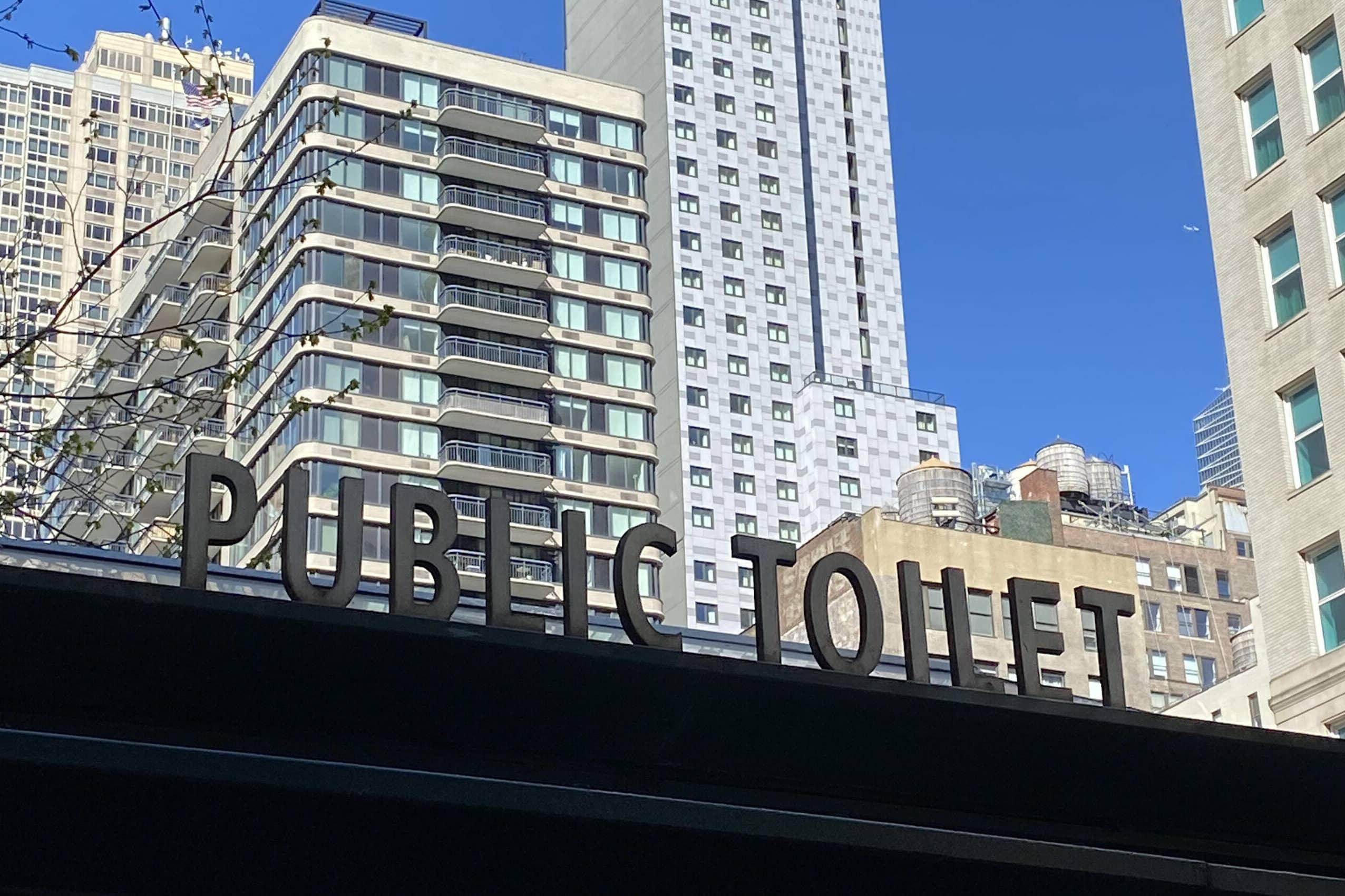Public Restroom Working Group

The Land Use, Housing & Zoning (LUHZ) Committee has been actively working to address the critical shortage of public restrooms in our district. Recognizing that building standalone facilities can be costly and complex, and that our district features far less public park space than the city average, the committee has explored practical solutions such as opening access to existing bathrooms in commercial buildings, retail spaces, and Privately Owned Public Spaces (POPS).
By engaging with developers, property owners, and city agencies, LUHZ advocates for restroom access as part of the public benefits exchanged for highly valuable development rights and concession space. The committee has also evaluated options like Automated Public Toilets for plazas where feasible, aiming to improve public health, accessibility, and overall quality of life in Midtown.
Why Bathrooms Matter
- Essential public infrastructure: Bathrooms are as fundamental as benches, streetlights, and sidewalks. Without them, people can’t comfortably spend time in public spaces.
- Equity and dignity: Access to a clean, safe restroom is a basic human need. It supports seniors, families, delivery workers, drivers, people with medical conditions, and anyone who spends long hours in public.
- Public health: More bathrooms mean cleaner streets, less public urination, and improved sanitation for everyone.
- Tourism and economic vitality: Midtown is a global destination. Welcoming, well-marked bathrooms improve the visitor experience, encouraging longer stays and more spending in local shops, restaurants, and cultural institutions.
- Public safety and livability: Well-maintained bathrooms
Existing Public Bathroom Access in CB5
Map of Public Bathrooms
FCNY Fellow Presentation: Midtown Public Bathroom Access includes survey of the design, features, and conditions of bathrooms in CB5, 311 complaints mapped across the district, spatial opportunities for bathroom construction, and policy recommendations for increasing public bathroom access.
2025 Updates: Local Law 58
Earlier this year, New York City passed Local Law 58 of 2025, committing to add at least 1,000 new public bathrooms by 2035, with half of them publicly owned. While ten years may seem like a long timeline, the planning decisions we make now will determine whether these future facilities merely replicate the status quo or truly redefine the quality and accessibility of our city’s public realm.
Today, New York City has only about 1,000 public bathrooms for a population of 8.5 million residents and 60 million annual visitors, that’s roughly one bathroom for every 7,700 residents. This shortage is compounded by issues of poor quality, limited maintenance, and safety concerns, leaving many facilities uncomfortable or even intimidating to use.
In Midtown Manhattan, where foot traffic from workers, residents, and tourists is among the highest in the world, the lack of accessible and welcoming bathrooms contributes to a degraded public realm. We have areas that smell of urine, hidden or locked facilities, and minimal signage that leaves visitors confused and frustrated. A well-designed, well-maintained public bathroom network is essential to a world-class city. It supports public health, dignity, and inclusivity, while also enhancing tourism and economic vitality. Clean, safe bathrooms make our streets more welcoming, our parks more usable, and our commercial corridors more vibrant.
While public bathrooms are not a one-size-fits-all solution, Community Board 5 has a critical role to play in ensuring Midtown becomes a leader in this citywide effort. We should explore a range of strategies, including public-private partnerships, to deliver more high-quality facilities. Encouraging large buildings especially office towers and retailers to open one of their existing bathrooms to the public is a cost-effective and practical approach. For these property owners, it’s primarily a matter of coordination and upkeep, not major construction.
By incentivizing participation through zoning bonuses or recognition programs we can create a network of accessible, well-managed bathrooms throughout Midtown. This not only benefits residents and tourists but also drives more foot traffic to local businesses, activates street life, and fosters a safer, more vibrant public realm.
The Community Board’s support can help ensure that Midtown leads by example by working with the city to explore incentive programs such as offering retailers a small stipend or free advertising to encourage them to open their bathrooms to the public, similar to the Community Toilet Scheme in the UK or the Nette Toilets in Germany. We can also advocate for updates to the POPS program to allow additional floor area in exchange for providing public bathrooms.
Because sidewalk space in Midtown is severely congested, relying on standalone automated toilets like those in Paris or Berlin is limiting for our district. Instead, encouraging buildings to make some of their existing bathrooms publicly accessible is a more effective and space- efficient strategy for our district.
